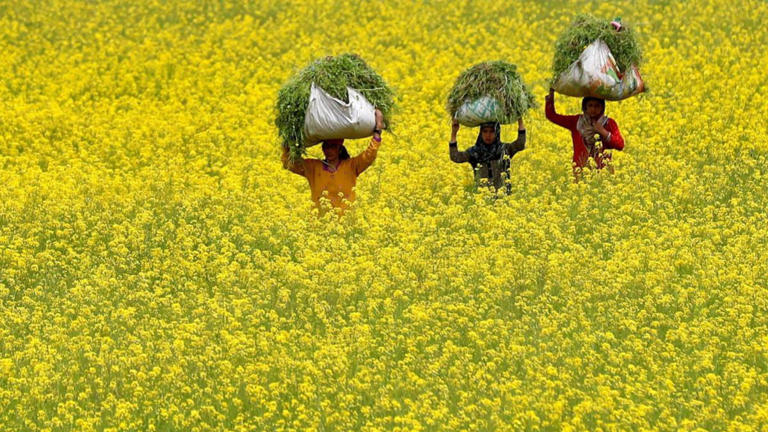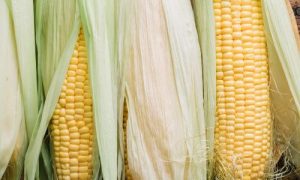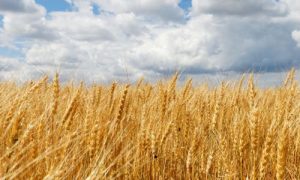Bangladesh : New mustard variety breaks yield ceiling

Bangladesh aims to reduce its edible oil import bill by increasing domestic mustard production. A newly developed mustard variety, BU Sharisha-1, offers higher yields of up to 2 tons per hectare. The country has seen a 31% increase in oilseed cultivation, with mustard being the primary crop. This could help reduce reliance on soybean and palm oil imports.
In Bangladesh, most people use soybean oil and palm oil for cooking, and these two oils account for about 75 percent of all the cooking oil purchased.
The country spends over Tk30,000 crore annually to meet its import bill for edible oil.
While oil extracted from domestically grown mustard could serve as a good import substitute, Bangladesh cannot afford to allocate sufficient land to farmers to expand mustard cultivation due to limited farmland. This has presented the country’s agronomists and plant breeders with a significant challenge: developing a mustard variety that can break the current yield ceiling.
Recently, success was achieved when a scientist at one of Bangladesh’s premier agricultural universities developed a mustard variety with a much higher yield potential than the current average harvest rate of existing varieties.
Dr AKM Aminul Islam, a professor in the Department of Genetics and Plant Breeding at Bangabandhu Sheikh Mujibur Rahman Agricultural University (BSMRAU), stated that the new variety, BU Sharisha-1, provides a yield of two tons per hectare. In comparison, Bangladesh’s current average mustard yield is only 1.3 tons per hectare.
Encouraged by the high yield potential of this new variety, the state-run Bangladesh Agricultural Development Corporation (BADC) obtained breeder seeds from Dr Aminul and conducted limited-scale field trials last season to produce foundation seeds. “We achieved a yield of 2.46 tons per hectare at our BADC farm in Dattanagar,” said BADC Research Cell Chief Coordinator Dr Nazmul Islam in an interview with Dhaka Tribune.
He described the results as highly promising and mentioned that BADC is currently growing more foundation seeds of BU Sharisha-1 in Meherpur. The organization expects to distribute some of these seeds to farmers in the near future.
Breeder seeds are produced by plant breeders and are used to create foundation seeds, which are subsequently used to produce certified seeds. Certified seeds are then used to produce food, forage, and other products.
Dr Aminul, the developer of the new variety, explained that farmers could cultivate BU Sharisha-1 for seeds, oil, and vegetables. The plant is highly resistant to major diseases and shattering. Additionally, each plant produces a large number of pods—up to 200—with each pod containing 25 to 30 seeds. This translates to potentially higher oil yields when the seeds are crushed.
Mustard production on the rise
The total demand for edible oil in Bangladesh is estimated to be about three million tons, with consumers largely dependent on imported soybean oil and palm oil.
In recent years, mustard oil has gained popularity as an alternative to soybean oil for many consumers at the household level.
Bangladesh produces a variety of oilseed crops, including mustard, peanuts, sunflowers, soybeans, and sesame. Mustard is the largest oilseed crop produced in the country.
Almost all oilseed crops in Bangladesh are cultivated during the Rabi season, with planting starting in December–January and harvesting occurring in February–March.
According to the Department of Agricultural Extension (DAE), in the 2023–24 financial year, the total oilseed cultivation area was 1.34 million hectares, with total oilseed production estimated at 1.83 million tons—up 31% and 29%, respectively, compared to FY 2022–23.
This increase in oilseed acreage and production is primarily due to the expansion of mustard cultivation.
Scientists and seed marketers hope that if higher-yielding new varieties are popularized and seeds are made available to farmers promptly, the country’s mustard seed and oil production could increase further, thereby reducing dependency on imported cooking oils.
According to the United States Department of Agriculture (USDA), Bangladeshi farmers cultivate both rapeseed (Brassica campestris and Brassica napus) and mustard (Brassica juncea), but they refer to both interchangeably as “mustard.”
Agricultural research institutes in Bangladesh, including BARI, BINA, and various universities, have released more than 20 mustard varieties. Among these, the most common rapeseed varieties are Tori-7, Sonil Sharisha (SS-75), Kallaynia (TS72), Sampad, Agrani, BARI Sharisha-6, BARI Sharisha-7, BARI Sharisha-8, BINA Sharisha-3, BINA Sharisha-4, SAU Sharisha-1, and SAU Sharisha-2. The most popular mustard varieties include Rai-5, Daulat, Sambal, BARI Sharisha-10, BARI Sharisha-12, and BARI Sharisha-16.
To read more about Edible Oil News continue reading Agriinsite.com
Source : Dhaka Tribune















